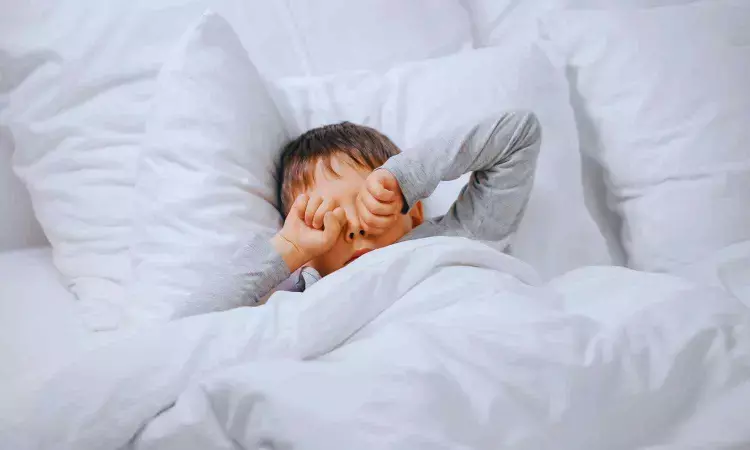- Home
- Medical news & Guidelines
- Anesthesiology
- Cardiology and CTVS
- Critical Care
- Dentistry
- Dermatology
- Diabetes and Endocrinology
- ENT
- Gastroenterology
- Medicine
- Nephrology
- Neurology
- Obstretics-Gynaecology
- Oncology
- Ophthalmology
- Orthopaedics
- Pediatrics-Neonatology
- Psychiatry
- Pulmonology
- Radiology
- Surgery
- Urology
- Laboratory Medicine
- Diet
- Nursing
- Paramedical
- Physiotherapy
- Health news
- Fact Check
- Bone Health Fact Check
- Brain Health Fact Check
- Cancer Related Fact Check
- Child Care Fact Check
- Dental and oral health fact check
- Diabetes and metabolic health fact check
- Diet and Nutrition Fact Check
- Eye and ENT Care Fact Check
- Fitness fact check
- Gut health fact check
- Heart health fact check
- Kidney health fact check
- Medical education fact check
- Men's health fact check
- Respiratory fact check
- Skin and hair care fact check
- Vaccine and Immunization fact check
- Women's health fact check
- AYUSH
- State News
- Andaman and Nicobar Islands
- Andhra Pradesh
- Arunachal Pradesh
- Assam
- Bihar
- Chandigarh
- Chattisgarh
- Dadra and Nagar Haveli
- Daman and Diu
- Delhi
- Goa
- Gujarat
- Haryana
- Himachal Pradesh
- Jammu & Kashmir
- Jharkhand
- Karnataka
- Kerala
- Ladakh
- Lakshadweep
- Madhya Pradesh
- Maharashtra
- Manipur
- Meghalaya
- Mizoram
- Nagaland
- Odisha
- Puducherry
- Punjab
- Rajasthan
- Sikkim
- Tamil Nadu
- Telangana
- Tripura
- Uttar Pradesh
- Uttrakhand
- West Bengal
- Medical Education
- Industry
Mouth Breathing Linked to Sleep-Disordered Breathing in Children, finds study

Sleep-disordered breathing (SDB) in children is a common but often underdiagnosed condition that can impact growth, behavior, and long-term health. Identifying modifiable risk factors is therefore critical.
A new study published in Frontiers in Pediatrics has highlighted a strong association between mouth breathing and sleep-disordered breathing in school-aged children, pointing toward the importance of early detection and intervention.
The study evaluated school-aged children for breathing patterns, sleep symptoms, and clinical indicators of airway obstruction. Researchers found that children who habitually breathed through the mouth had a markedly higher risk of developing Sleep-disordered breathing compared to those who primarily breathed nasally.
Mouth breathing was associated with increased rates of snoring, restless sleep, and observed breathing pauses during the night, which are hallmark features of Sleep-disordered breathing. Importantly, the link between mouth breathing and Sleep-disordered breathing persisted even after accounting for confounding variables such as age, sex, and body mass index.
This suggests that mouth breathing itself is an independent risk factor for sleep-related breathing disorders. Researchers emphasized that chronic mouth breathing may reflect underlying nasal obstruction, enlarged tonsils or adenoids, or allergic rhinitis, which in turn contribute to airway collapse during sleep.
The findings underscore the need for pediatricians, dentists, and caregivers to pay closer attention to children’s breathing habits. Simple screening for habitual mouth breathing in school-aged children could serve as an early marker for those at risk of Sleep-disordered breathing, facilitating timely referral for further evaluation and management. Researchers concluded that targeted interventions—such as managing nasal obstruction, orthodontic evaluation, or adenotonsillectomy in select cases—may help reduce the burden of Sleep-disordered breathing in children.
However, they also cautioned that longitudinal studies are required to better understand causality and the long-term outcomes of early intervention strategies. Overall, the study provides strong evidence that mouth breathing is not a benign habit but a clinically relevant marker of potential sleep-disordered breathing, highlighting the importance of early recognition in improving pediatric health outcomes.
Reference
Zheng, Y., Zhang, J., Li, Z., Li, Y., & Chen, R. (2025). Association between mouth breathing and sleep-disordered breathing in school-aged children: A cross-sectional study. Frontiers in Pediatrics, 13, 12412591. https://doi.org/10.3389/fped.2025.12412591
Dr. Shravani Dali has completed her BDS from Pravara institute of medical sciences, loni. Following which she extensively worked in the healthcare sector for 2+ years. She has been actively involved in writing blogs in field of health and wellness. Currently she is pursuing her Masters of public health-health administration from Tata institute of social sciences. She can be contacted at editorial@medicaldialogues.in.
Dr Kamal Kant Kohli-MBBS, DTCD- a chest specialist with more than 30 years of practice and a flair for writing clinical articles, Dr Kamal Kant Kohli joined Medical Dialogues as a Chief Editor of Medical News. Besides writing articles, as an editor, he proofreads and verifies all the medical content published on Medical Dialogues including those coming from journals, studies,medical conferences,guidelines etc. Email: drkohli@medicaldialogues.in. Contact no. 011-43720751


